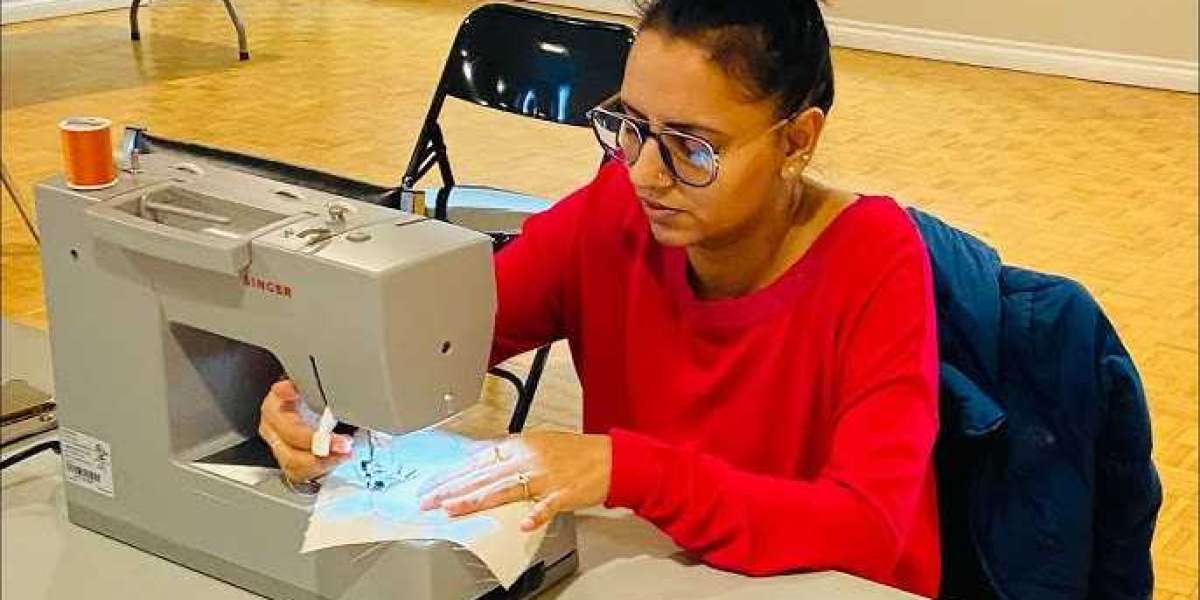In this article, we’ll explore the history of sewing, its evolution, and how it has shaped both practical and artistic aspects of human life.
Early Beginnings: The Birth of Sewing
The origins of sewing date back thousands of years, long before the invention of machines. Early humans used rudimentary tools and materials to stitch clothing, shelter, and other necessities.
1. Prehistoric Sewing
- Needles and Thread: Archaeological evidence suggests that sewing began in prehistoric times, likely around 20,000 years ago. Early humans used bone, ivory, and antler as needles and animal sinew or plant fibers as thread.
- Stone Age: Clothing during the Stone Age was made primarily from animal skins, which were sewn together using needles and threads made from natural materials. These garments offered protection against the harsh elements.
- The First Needles: The earliest known sewing needles, dating back to the Paleolithic Era, were made from bone and had a large hole for threading. These needles were crucial for sewing fur and skin together to create clothing and tents.
2. The Development of Weaving and Spinning
- Weaving and Spinning: Around the same time as early sewing, humans developed the art of spinning fibers into yarn and weaving them into fabric. This development made the creation of clothing more sophisticated, as it allowed for more varied and durable materials than animal skins alone.
- The Loom: The loom, a device for weaving fabric, was invented by ancient civilizations like the Egyptians and Mesopotamians. The loom enabled people to weave more efficiently and on a larger scale.
The Rise of Sewing in Ancient Civilizations
As civilizations grew and advanced, so did the techniques and tools used for sewing.
1. Ancient Egypt and Mesopotamia
- Sewing as a Craft: In ancient Egypt and Mesopotamia, sewing became a specialized craft. Tailors and seamstresses were trained to create intricate clothing for the elite and for ceremonial purposes. Fabrics like linen and wool became common, and decorative techniques such as embroidery were introduced.
- Embroidered Clothing: Embroidery, the art of decorating fabric with thread, flourished in ancient Egypt. Royal and religious figures often wore elaborately embroidered garments, which were symbolic of their status.
2. Ancient Rome and Greece
- Sewing for the Masses: In the ancient Roman Empire and Greece, sewing became widespread, and clothing was often made at home by women. Roman and Greek citizens wore simple tunics and togas that were sewn with linen or wool.
- Tailoring: The tailoring of garments became more sophisticated, especially for the wealthy classes. The use of wool became more common, and Roman society saw the development of complex sewing techniques, including decorative stitches and the creation of tailored garments.
The Middle Ages: Sewing Becomes More Refined
During the Middle Ages, sewing became more elaborate as both clothing and embroidery became status symbols.
1. Medieval Europe
- Fashion for the Elite: In medieval Europe, the nobility and clergy wore richly embroidered garments, often adorned with precious metals and stones. Tailors and seamstresses were highly skilled, and garments were often created specifically for individuals, requiring advanced techniques in pattern making and fitting.
- Religious Influence: The Church played a major role in the production of clothing during this period, with monks and nuns often working on elaborate ecclesiastical robes and vestments, incorporating embroidery into their designs.
2. The Advent of the Sewing Machine
- Mechanical Advances: By the late medieval period, European societies had begun to make advancements in tools and machinery that would later influence the sewing process. However, it wasn’t until the Industrial Revolution that mechanical sewing machines would truly change the landscape of sewing forever.
The Industrial Revolution: The Birth of the Sewing Machine
The Industrial Revolution in the 19th century brought a significant shift to the world of sewing. Mass production, technological innovations, and an increase in demand for ready-made clothing led to the invention of the sewing machine.
1. The Invention of the Sewing Machine
- Elias Howe (1846): Elias Howe patented the first practical sewing machine in 1846. His machine used a lockstitch system, which revolutionized the speed and efficiency of stitching. It was designed for industrial purposes, allowing manufacturers to produce garments more quickly and cheaply.
- Isaac Singer (1851): Isaac Singer improved upon Howe’s design, creating a more efficient and commercially successful sewing machine. He patented his version in 1851, which featured a foot pedal for continuous operation. Singer's machines made sewing more accessible to both individuals and industries, and his company became one of the largest sewing machine manufacturers in the world.
2. The Impact on Society
- Ready-Made Clothing: The sewing machine drastically lowered the cost of producing clothing, leading to the rise of ready-made garments. This shift helped the fashion industry grow, as clothing became more affordable and accessible to people of various social classes.
- Home Sewing: As sewing machines became more affordable for domestic use, many households, especially in the 19th and early 20th centuries, embraced home sewing. The ability to sew garments at home empowered people to create their own clothing, repair items, and even start small businesses selling their products.
The 20th Century: Sewing Becomes a Popular Hobby and Craft
As the world progressed into the 20th century, sewing transitioned from a necessity to a popular hobby for millions of people worldwide.
1. Sewing in the Home
- Home Sewing Machines: By the early 1900s, home sewing machines were affordable and widely used in households. The development of more compact and user-friendly machines made it easier for people to sew clothing, quilts, and other household items.
- Sewing as a Craft: During the Great Depression and World War II, sewing became a practical skill as people needed to make do with limited resources. It also became a way for families to express creativity and personalize their clothing.
2. The Revival of Fashion Design
- Fashion Designers: In the 20th century, fashion designers like Coco Chanel, Christian Dior, and Yves Saint Laurent revolutionized the fashion industry. Sewing remained central to the fashion world, with designers relying on seamstresses to create custom garments for their haute couture collections.
- Sewing for Fun: The mid-to-late 20th century also saw an increase in sewing as a recreational activity. People began to sew clothing, quilts, and home décor as a hobby. Many craft stores began offering classes, patterns, and materials for enthusiastic sewers.
Modern-Day Sewing
Today, sewing continues to be an important aspect of both professional fashion design and amateur crafting. The rise of DIY culture and the accessibility of online resources has sparked a sewing renaissance, where people create everything from clothing to home furnishings and accessories.
1. Technological Innovations
- Computerized Sewing Machines: Modern sewing machines come with advanced features, such as embroidery capabilities, automatic thread tension, and computerized stitch options. These innovations have made sewing easier and more efficient.
- Sewing and Sustainability: In recent years, there has been a growing movement in sustainable fashion, where people use sewing as a means to upcycle, repair, or create eco-friendly garments.
2. Sewing as a Creative Expression
Sewing is no longer just a practical skill; it has become an avenue for creative expression, with people experimenting with different fabrics, techniques, and designs. From quilting to fashion design, sewing allows individuals to craft one-of-a-kind pieces that reflect their personality and values.
Conclusion
The history of sewing spans thousands of years, from the rudimentary tools of early humans to the modern sewing machines we use today. Over time, sewing has evolved from a necessity into both an art and a hobby, shaping cultures, industries, and personal creativity. As technology continues to advance, sewing remains a vital and rewarding skill, connecting us to our history while enabling us to express our creativity in endless ways.














